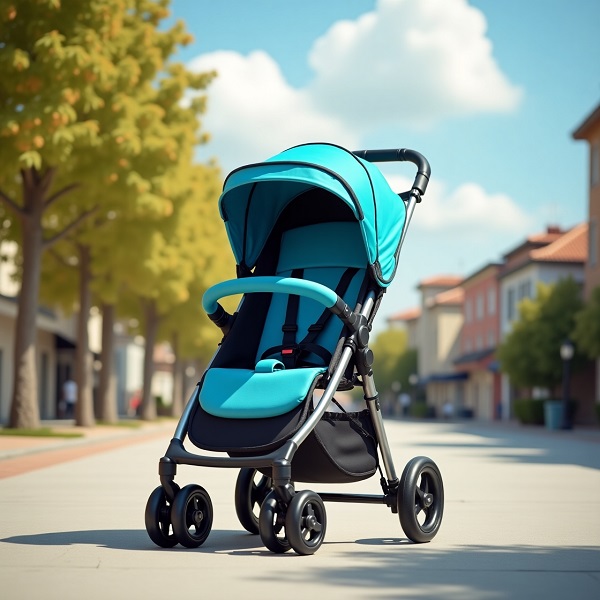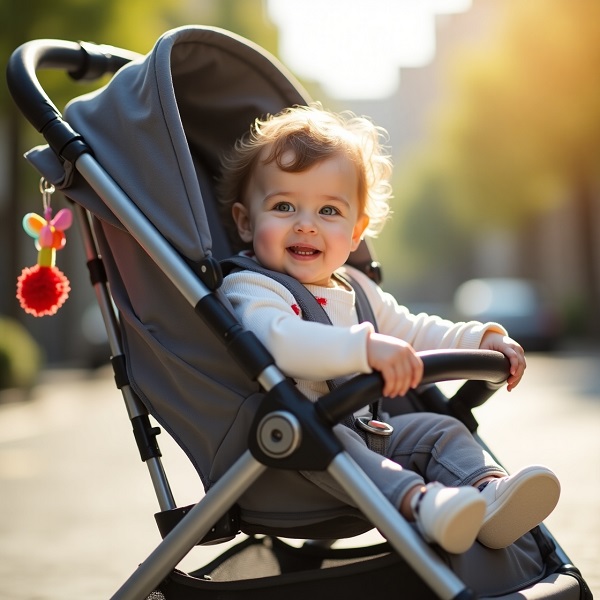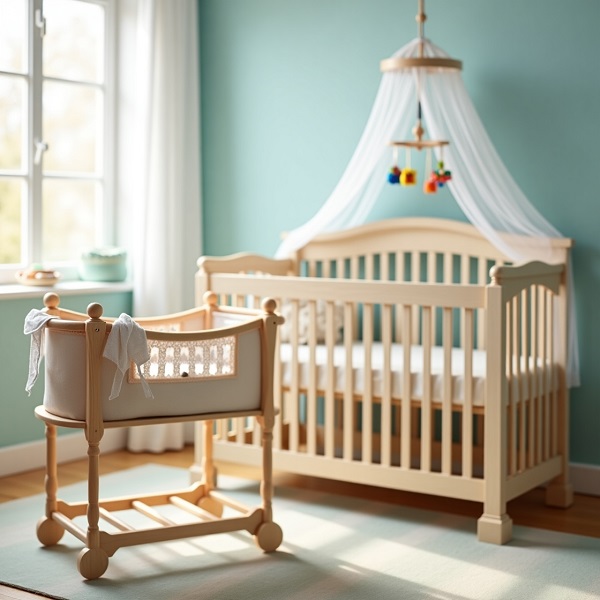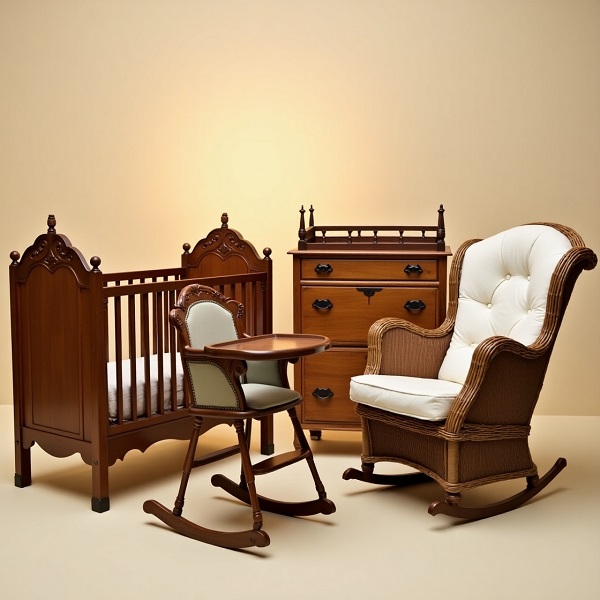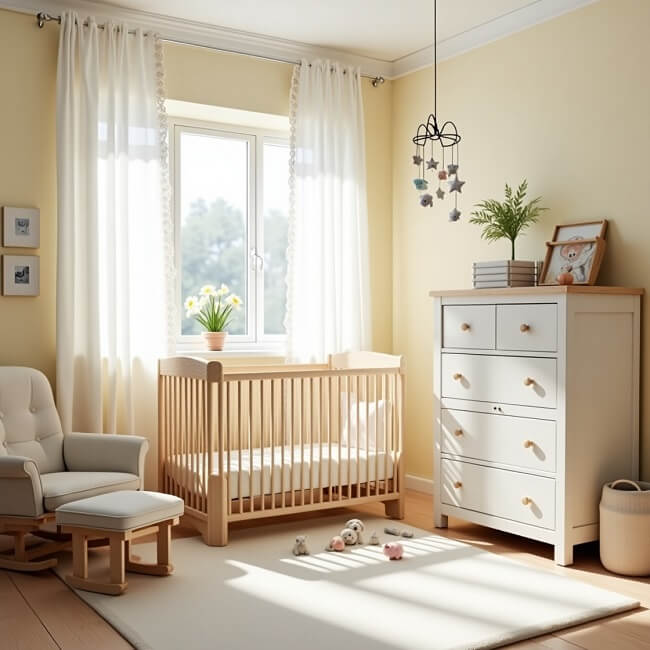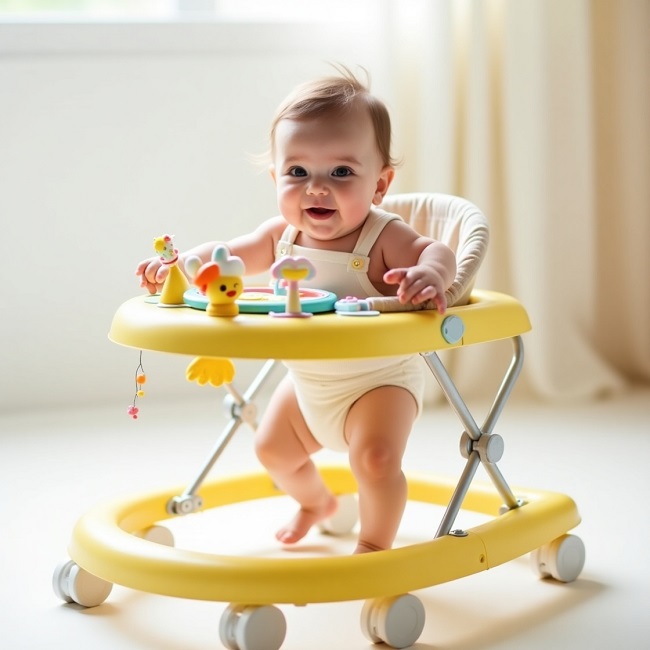Between bassinets, car seats, bottle warmers, and diaper pails, one item quietly loomed large: the stroller. It’s not just another piece of equipment; it’s your baby’s first vehicle, your daily companion, and often, the single most expensive item on the registry.
But as you start narrowing your choices, you’ll keep seeing the term “full-size stroller.” What does that actually mean? And more importantly—do you really need one?
Unlike more minimalist models, full-size strollers are designed for long-term use. They’re the SUVs of the baby gear world—spacious, sturdy, and packed with features that make daily life smoother. But with great capability comes trade-offs. Is the extra weight worth it? Will it fit in your trunk? And can it keep up with your on-the-go lifestyle?
This guide breaks down everything you need to know—from features and advantages to comparisons with other stroller types—so you can decide if a full-size stroller is the right fit for your family’s journey.
What Are the Key Features of a Full-Size Stroller?
A full-size stroller is the heavyweight champion of the stroller world—solid, feature-packed, and built to go the distance. Most models tip the scales at around 20 to 30 pounds and are designed to hold kids up to 50–75 pounds. In other words, they’re made to last from your baby’s first days all the way through toddlerhood and even the preschool years. That’s a far cry from lightweight strollers (10–15 lbs) or umbrella models (often under 10 lbs), which focus more on portability than long-term versatility.
Think of the full-size stroller as the all-in-one workhorse of baby gear. It’s the kind of stroller you lean on for daily walks, grocery runs, family outings—you name it. But what exactly qualifies a stroller as “full-size”?
A Broader Frame, Built for Comfort
At first glance, you’ll notice the size. Full-size strollers offer a wider seat, longer wheelbase, and greater overall stability. All of that translates to a smoother, roomier ride—your baby can stretch out, nap, or sit upright without feeling cramped.
Fully-Featured Seating and Adjustability
What really sets these strollers apart is the seat. Most full-size models offer deep recline options—including a near-flat position that’s newborn-friendly and perfect for mid-walk naps. A reliable five-point harness and adjustable footrest help provide both comfort and security.
In many full-size models, the seat is reversible—meaning your baby can face you during the early months, and later switch to outward-facing to explore the world.
Generous Canopy and Weather Protection
Rain or shine, full-size strollers are built to handle it. The canopies are often extra-large, with built-in sun protection, mesh ventilation, and peekaboo windows. Whether it’s strong sun, a chilly breeze, or light rain, your little one stays comfortably sheltered.
Ample Storage and Practical Add-ons
If you’ve ever packed for a quick trip out with a baby, you know you’re not traveling light. Full-size strollers understand the assignment: they usually come with a roomy under-seat basket plus parent-friendly extras like cup holders, snack trays, and zippered storage pockets.
Durable Wheels and Suspension Systems
Forget tiny plastic wheels—full-size strollers come equipped with larger, rugged wheels and often feature built-in suspension systems. The result? A smoother, more stable ride across sidewalks, parks, and even bumpier terrain like gravel or grass.
Compatibility with Infant Car Seats and Accessories
Most full-size strollers are part of a modular system, meaning they pair easily with infant car seats—either directly or using an adapter. That way, you can move your baby from the car to the stroller without disturbing a much-needed nap.
When Can a Baby Use a Full-Size Stroller?

It’s a question almost every new parent asks at some point: Is a full-size stroller something I need right away, or something for later on? The answer? With the right setup, many full-size strollers are ready to roll from day one—yes, even that first trip home from the hospital.
The key is configuration. A full-size stroller is only newborn-friendly if it reclines fully flat, pairs with an infant car seat, or works with a compatible bassinet attachment. Without that support, a newborn’s still-developing neck and spine won’t be properly protected.
Around 3-6 months, when your baby starts holding their head up and showing more interest in the world, you’ll notice the stroller’s versatility really shine. By 6 months, when most babies can sit with minimal support, you can adjust the seat to more upright positions – perfect for curious little explorers.
And here’s where full-size strollers really shine: they grow with your child. Most can handle up to 50 or even 65 pounds, which means you’re not just buying something for the first year—you’re investing in a ride that can last through toddlerhood and beyond. While other strollers tap out early, your full-size model is still going strong for playground runs, zoo trips, and everything in between.
Pros and Cons of Full-Size Stroller
Pros of Full-Size Stroller
Superior Comfort for Growing Children: Newborns benefit from plush, fully reclining seats that properly support their developing spines, while toddlers enjoy spacious seating with adjustable leg rests that accommodate their growing limbs.
Exceptional Durability for Long-Term Use: Constructed with aircraft-grade aluminum or reinforced steel frames, these strollers withstand years of daily use. The high-quality materials and precision engineering mean your stroller can potentially serve multiple children, making it a more sustainable choice.
Exceptional All-Terrain Performance: Cobblestone streets, park trails, uneven sidewalks—no problem. Equipped with air-filled tires and advanced suspension, full-size strollers glide smoothly over various surfaces without jarring your child. The ride remains smooth and steady, even on uneven or challenging terrain.
Comprehensive Weather Protection: From blazing sun to drizzly mornings, full-size strollers come prepared. Most include oversized canopies with UPF 50+ protection, built-in ventilation, and add-on rain shields or foot muffs. No matter the forecast, your child stays sheltered, shaded, and comfortable.
Cons of Full-Size Stroller
Substantial Weight and Bulk: All that comfort and durability come with a trade-off: weight. Full-size strollers typically weigh between 20 and 30 pounds—and that’s before you add your child and a diaper bag. Getting them in and out of a trunk (especially in a hurry) can be a workout. They also take up serious space when folded.
Complex Maneuvering in Tight Spaces: It will become cumbersome in crowded stores, narrow aisles, or busy public transportation. The turning radius, though precise for a stroller of this size, requires more planning in confined spaces compared to compact models.
Higher Initial Investment: You’ll usually pay more for a full-size stroller than for a basic umbrella or travel version. And while the value pays off if you use it often or for multiple kids, that initial price can be a sticking point—especially when you’re budgeting for all the other gear that comes with a new baby.
How to Pick the Right Full-Size Stroller for You?
Start with Your Daily Routine
Before getting lost in features and specs, think about your everyday life. Are you the parent who loves long walks around the neighborhood or lingering afternoons at the park? Or are your days a blur of quick errands, car rides, and ducking into crowded stores?
If you’re mostly on foot, you’ll want a stroller that’s sturdy, comfortable, and loaded with storage—basically, your mobile home base. But if your lifestyle involves constant in-and-out-of-the-car moments, a model that folds quickly and lifts easily might save you a lot of frustration.
Consider Your Living Space and Storage
Is there a garage, mudroom, or roomy hallway where you can store the stroller between trips? Or will it have to stay folded inside your apartment or rest against the wall in your entryway?
If space is tight, look for a model that folds down fast and stands upright on its own. It won’t shrink your stroller, but it will make tucking it away a lot less painful.
Think About Long-Term Use
Full-size strollers are built to last—so make sure yours can keep up with your family. If you’re thinking long-term or planning for more than one child, features that adapt over time can make a big difference.
A higher weight capacity, a seat with multiple recline positions, and the option to convert into a double stroller or add a ride-along board for an older sibling are all things that make a stroller more adaptable over time. Also, consider compatibility with infant car seats or bassinets if you plan to use it from birth.
Full-Size Stroller Vs. Lightweight Stroller Vs. Travel System
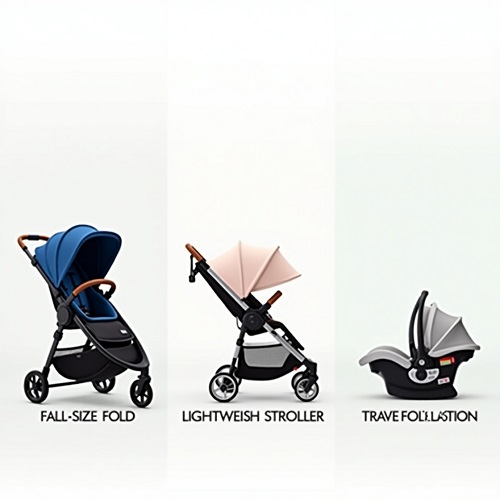
When you’re standing in the stroller aisle—either in a store or on your screen—it doesn’t take long to realize that not all strollers are created equal. The discussion usually centers around three main types: full-size strollers, lightweight strollers, and travel systems. While they often overlap in function, each one serves a distinct purpose and fits into daily life in different ways.
Full-Size Strollers: Think of the full-size stroller as your reliable everyday partner—the one that’s with you from those sleepy newborn days to full-on toddlerhood. It’s the stroller you’ll likely use the most, especially if you’re walking regularly, running errands, or just navigating daily life with a baby.
Lightweight Strollers: Lightweight (or umbrella) strollers are all about simplicity. They’re easier to carry, fold up in a flash, and make quick trips or travel days a whole lot easier. You won’t get the same level of cushioning or adjustability, but if you’re juggling an airport or hopping in and out of the car, their portability is hard to beat.
Travel Systems: A travel system isn’t a type of stroller so much as a package deal. It usually pairs a full-size stroller frame with a compatible infant car seat that clicks right in. The magic? You can move your baby from car to stroller without disturbing their sleep.
| Feature | Full-Size Stroller | Lightweight Stroller | Travel System |
| Age Range | Newborn to toddler (with recline or car seat) | Usually 6 months and up | Newborn to toddler (with included car seat) |
| Weight Range | 20–30 lbs (9–14 kg) | 10–15 lbs (4.5–7 kg) | 25-35 lbs |
| Foldability | Moderate (may require both hands) | Very compact and quick to fold | Depends on stroller model |
| Car Seat Compatibility | Often requires separate adapters | Rarely compatible | Built-in compatibility with included car seat |
| Price Range | Medium to high | Budget to mid-range | Mid to high, depending on car seat quality |
| Longevity | High—often up to 50–65 lbs | Moderate—typically up to 40–45 lbs | High (if used with or without car seat) |
| Terrain Handling | Excellent (all surfaces) | Good (paved surfaces) | Good (paved surfaces) |
| Special Features | Suspension, large canopies | Ultra-portable | Car seat integration |
| Ideal User | Walk-heavy families | Urban commuters | Car-dependent parents |
Are Full-Size Strollers Allowed on Airplanes?
Yes, most airlines do allow full-size strollers to be checked as free baggage when you’re flying with a child. In fact, it’s a standard policy for many carriers around the world.
But here’s the real talk: Most parents regret checking their full-size stroller. Why? Well, let’s be honest—air travel with kids is chaotic enough without adding unnecessary hassles.
Full-size strollers are fantastic for neighborhood walks, but airports? Not so much. Tight security lines, narrow boarding bridges, and packed terminals turn maneuvering into an obstacle course.
Most full-size models don’t fold down small enough to bring onboard, which means they’ll go into the baggage hold—and once that happens, you won’t see your stroller again until baggage claim.
Many destinations (especially family-friendly ones) have stroller rental services with quality options. Some hotels even lend them for free. Why haul a bulky stroller across the country when you could have one ready and waiting at your destination?
So while airlines are usually happy to check your stroller for free, many parents end up bringing a lightweight travel stroller for flights and saving their full-size one for everyday life at home. It’s not a rule—it’s just one of those travel tips you tend to learn the hard way (unless someone tells you first).
Conclusion
From those sleepy newborn strolls to the non-stop energy of toddlerhood, a full-size stroller can be a real game-changer. It offers comfort, support, and just enough sanity-saving features to make getting out the door feel a little less chaotic—and a lot more doable.
But let’s be real: not every lifestyle is made for a full-size model. These strollers shine when you’ve got the space to store them, sidewalks to use them, and the kind of days where comfort and storage matter more than saving a few pounds. They’re not the smallest or lightest—but they earn their spot with durability, flexibility, and features that grow right alongside your child.
If you’ve made it this far, you’re probably someone who likes to do their homework—and that’s exactly the mindset a big-ticket item like this deserves. So take your time. Picture your daily routine. And choose the stroller that’s going to make those everyday moments just a little bit easier.

